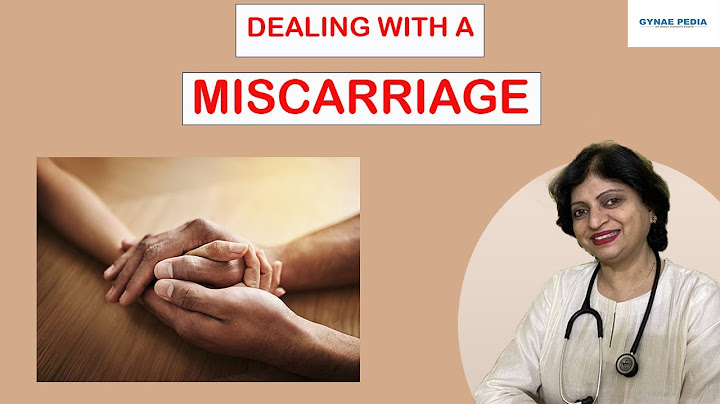People with schizophrenia can experience both positive and negative symptoms. This doesn't mean that there are "good" versus "bad" symptoms. Positive symptoms are behaviors that appear in surplus in people with schizophrenia and are typically not found in otherwise healthy individuals. Show
Positive symptoms, which include delusions, hallucinations, disorganized thoughts, and disorganized speech, can cause you or someone you love to lose touch with reality. Negative schizophrenia refers to behaviors or emotions that are deficient or lacking in people with schizophrenia. As negative symptoms indicate deficits in functioning they are also called deficit symptoms. Negative symptoms, including lack of emotion, decreased joy or motivation, delayed speech, and difficulty beginning and sustaining activities, can be scary and extremely debilitating. If you or someone you love is struggling with negative symptoms, you may need help in order to complete daily tasks. Causes of Negative SymptomsThe cause of negative symptoms is not clear. While some studies say these deficits run in families, there is no known genetic association for negative symptoms or deficit schizophrenia. Interestingly, while winter birth increases the risk for schizophrenia, people with schizophrenia born in the summer appear to be at higher risk for negative symptoms. Types of Negative SymptomsThe first step in managing the negative symptoms of schizophrenia is to understand the different types, which typically have one of four defining features:
Because negative symptoms can include deficits in cognitive, emotional, and social abilities, there can be a large number of potential symptoms. The most recent version of the Diagnostic and Statistical Manual of Mental Disorders (DSM-5) describes negative symptoms as “restricted emotional expression and avolition,” and includes the following five types. Blunted AffectThis limits a person's ability to convey his or her emotions, causing diminished facial and emotional expressions. A blunted affect is less severe than flat affect, in which a person has an extremely limited range of emotions; for instance, not even being able to crack a smile or laugh during a time of great joy. People can mistake blunted affect as someone being "cold" or "unfeeling." AlogiaDefined in DSM-5 as a "decrease in verbal output or verbal expressiveness," alogia (also known as "poverty of speech") can make it nearly impossible to communicate your thoughts and carry on a conversation. People with alogia may answer a monosyllabic "yes" or "no" when responding to questions and/or experience delays in getting the words out. It should be noted that these speech delays are not the same as those caused by positive symptoms like auditory or visual hallucinations and disorganized thinking. AsocialityOther terms used to describe asociality are nonsocial, unsocial, social disinterest or a lack of social drive. Asociality causes a lack of involvement in social relationships or increased desire to spend time alone. This is different than a person who isolates him or herself after hearing voices or experiencing feelings of paranoia. AvolitionAvolition is a form of emotional or behavioral paralysis that can diminish your drive to participate in social activities and meet goals as well as your ability to complete daily tasks. Many people mistake this negative symptom for "laziness." But, in the case of schizophrenia, avolition causes a pervasive lack of enthusiasm coupled with a striking lack of concern for both minor and major matters such as what to eat, how the bills will get paid, and what will happen when the family will no longer be around for support). This can even carry over into basic activities like personal hygiene and grooming. AnhedoniaIn Greek, an means "without" and hedone means "pleasure," so in simple terms, anhedonia is a state where you are unable to feel pleasure. For people with schizophrenia, this can mean a lack of enthusiasm for activities, hobbies, passions, and pleasures once enjoyed. Diagnosing Negative SymptomsNegative symptoms are not always easy to recognize and can be mistaken for depression as well as other mental illnesses. What's more, they may come and go during the course of schizophrenia. Often times, people with schizophrenia might have one negative symptom in addition to the more commonly observed positive symptoms. At times, some of the medications prescribed for the treatment of schizophrenia, such as the first generation or typical antipsychotics, also known as neuroleptics, have adverse effects such as decreased interest or decreased emotional response. Since these symptoms are due to the medications, they are called secondary negative symptoms. What Is Deficit Schizophrenia?Deficit schizophrenia, which is not synonymous with deficit symptoms or negative symptoms, is diagnosed when patients have:
People with deficit schizophrenia have a poorer response to treatment, social and occupational functioning, and overall quality of life than people with non-deficit schizophrenia. Treatment for Negative SymptomsTreating negative symptoms is tricky due to the very nature of the negative symptoms; someone experiencing a lack of motivation, enthusiasm, or desire to be social, for instance, may be hesitant to seek and stick with treatment. In addition, the drugs used to treat positive symptoms of schizophrenia can increase secondary negative symptoms and do not work on primary and persistent negative symptoms. This is why effective treatment ideally includes a combination of drugs, therapy, and support. Atypical AntipsychoticsSecond-generation medications known as atypical antipsychotics are the first-line treatment for schizophrenia. There are many different atypical antipsychotics used to treat schizophrenia, including:
Typical AntipsychoticsTypical antipsychotic medications (Haldol (haloperidol) and Thorazine (chlorpromazine), which can be used for the treatment of positive symptoms of schizophrenia such as hallucinations and delusions, are not effective in treating negative symptoms, such as lack of emotion, motivation, or interest in social activities. While effective against positive symptoms, these older, first-generation antipsychotics have a number of neurological adverse effects, such as parkinsonism (when medications cause symptoms similar to Parkinson's disease), that can increase secondary negative symptoms. These drugs, also known as neuroleptics or major tranquilizers, can help treat negative symptoms that are secondary to positive symptoms. For example, people can be socially isolated due to paranoid beliefs or voices commanding them not to leave their home. In such cases, antipsychotics that decrease paranoia and auditory hallucinations (hearing voices or sounds) will improve social affiliation. AntidepressantsWhile it is by no means a cure, combining antipsychotics with antidepressants has been shown more effective than taking antipsychotics alone. Antidepressants work by increasing the availability of one or several of the following neurotransmitters:
Psychosocial InterventionsPsychosocial interventions, including behavioral therapy, support therapy, and family psychoeducation, aim to change a person's behaviors toward a more healthy interaction with society. These therapies can provide people with persistent negative systems as well as their families with tools to identify and cope with deficits in cognitive and emotional functioning and social skills. Supportive TherapySupportive therapy provides an opportunity for companionship, non-judgmental validation, common-sense advice, and reassurance from a trained therapist. Often, your therapist will step in on your behalf to facilitate communication with family members as well as authorities like schools and social agencies. Behavioral TherapyBehavioral therapy, including social skills training and cognitive-behavioral therapy (CBT), can teach you to recognize and engage in behaviors and activities that will improve the quality of life and day-to-day living. For example, during social skills training you will be taught how to express feelings and needs, ask questions, and control voice, body, and facial expressions. CBT can teach you or someone you love to identify and change the deficits that have a negative influence on behavior and emotions. Family PsychoeducationFamily support plays a key role in the treatment of negative symptoms. Psychoeducation for patients and families is helpful in decreasing stigma and improving opportunities for ongoing social engagement. It can also offer families effective strategies for communicating and coping with a loved one with schizophrenia. A Word From VerywellThe negative symptoms of schizophrenia can cause severe disruptions in daily functioning, relationships, work, school, hobbies, and leisure activities. With an appropriate diagnosis, treatment, and support, you or someone you love can find relief from these symptoms and discover ways to cope effectively. What are the negative and positive symptoms of schizophrenia?Schizophrenia is a nonpreventable, challenging mental disorder, but it is treatable. The positive symptoms include hallucinations, delusions, illogical changes in behavior or thoughts, hyperactivity, and thought disorder. The negative symptoms include apathy, lethargy, and withdrawal from social events or settings.
What is negative and positive symptoms?“Positive' symptoms are changes in thoughts and feelings that are “added on” to a person's experiences (e.g., paranoia or hearing voices). “Negative” symptoms are things that are “taken away” or reduced (e.g., reduced motivation or reduced intensity of emotion).
What are negative symptoms in schizophrenia?Negative mental symptoms. a seeming lack of interest in the world.. not wanting to interact with other people (social withdrawal). an inability to feel or express pleasure (anhedonia). an inability to act spontaneously.. decreased sense of purpose.. lack of motivation (avolition). not talking much.. What are 3 positive symptoms of schizophrenia?Positive Symptoms of Schizophrenia: Things That Might Start Happening. Hallucinations. People with schizophrenia might hear, see, smell, or feel things no one else does. ... . Delusions. ... . Confused thoughts and disorganized speech. ... . Trouble concentrating. ... . Movement disorders.. |

Related Posts
Advertising
LATEST NEWS
Advertising
Populer
Advertising
About

Copyright © 2024 en.apacode Inc.


















